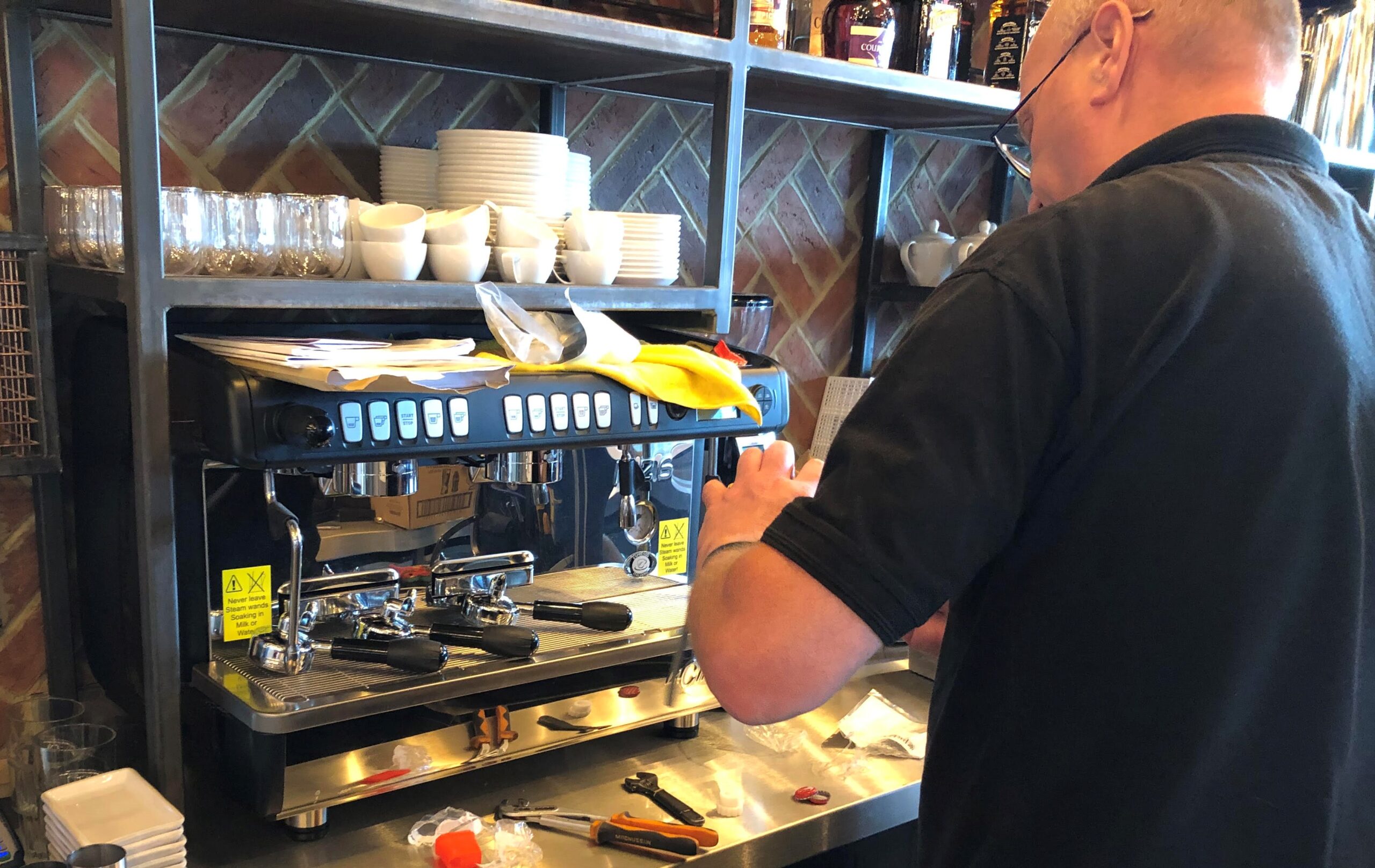Top tips for installing a traditional coffee machine

Maxime Herbaut, National Sales Manager at Cimbali looks at some of the key points to consider before installing a new traditional coffee machine
Taking delivery of your new coffee machine
“Undoubtedly, a professional coffee machine is likely to be one of the largest investments a coffee shop is likely to make.
Whether opening a brand-new cafe or refurbing an existing space, the day the shiny new coffee machine arrives is always going to be memorable.
Ensure the basics are sorted out in advance so there are no delays in store once the engineers are on site. That way, installation day won’t become memorable for all the wrong reasons.
Where shall I put the coffee machine?
OK. This may sound like a daft question i.e., it’s obvious, isn’t it? But that’s not always the case.
When dealing with a new café build out things are a lot easier because the whole set up i.e., power and water supply, location of other equipment, customer flow etc. are likely to have been considered and planned for in advance and there is the opportunity to set things up exactly as you want them.
Things are not quite so straightforward in a retrofit situation when all the ‘essentials’ are already in place which means you have to work with what you have already got.
Where the machine is located has a significant impact on the whole coffee experience including workflow management, customer engagement and aesthetics so it’s important to get it right.
Most traditional coffee machines are a design statement and become a focal point for the whole coffee shop. In most situations, the optimum area for installation is therefore on the front counter, in full view of customers.
Installation essentials
Space is required for the barista team whilst at work steaming the milk, tamping, serving coffee and, of course, chatting to customers. With this in mind, moving the machine a few centimetres either way can make a big difference in terms of freeing up space for the barista to work comfortably.
Counter height and strength also have to be considered. Traditional machines are heavy and it’s important that the counter is sturdy enough to support the machine and robust so that it doesn’t move when the machine is being used.
Most machine manufacturers will stipulate that the cold water supply with an isolator valve (on/off tap) is no more than 1 -1.5 metres from the espresso machine. Access is also needed in the countertop for hoses and cables for the machine’s waste, water and power supply. This is definitely something that people overlook – or they plan for it, but in the wrong location ….
It is essential to look at the spec sheet for the machine you have in mind and mask out the counter area with tape so you can see if there is sufficient space for the proposed layout – better safe than sorry.
Don’t forget water and power
Specific parameters for recommended water quality will be set out by the machine manufacturer so it’s worth checking this out in advance.
Limescale build-up can be an issue in a hard water area. As well as clogging up machine components causing unnecessary machine breakdowns, limescale deposits can affect the quality of the finished drink. A low pH level and excessive chlorine can also adversely impact drink quality and machine operation too.
If in doubt about the quality of water in your area, then have it tested (not least because machine damage caused by poor water quality could invalidate the manufacturer’s warranty).
You may need a water filter system, of which there are plenty on the market, with differing levels of sophistication. If in doubt, call in an expert to advise on the most appropriate system for your needs.
In terms of power supply, requirements will vary according to the machine. Single group traditional machines can usually run off a 13 amp plug, whereas a larger two/three group model commonly requires a 16 to 32 amp single-phase supply. If the site is busy and a faster machine performance is needed then a larger three-phase supply may be required. Best advice is to always check machine specs first and get the right electrics sorted before installation day.
Installation day arrives
Installation day should be a breeze if the necessary prep has been undertaken in advance.
Ideally, the installation team will arrive on site, position the machine in the right location, power up and get started on the set-up process.
The engineer must set up the machine and grinders perfectly, according to the drink selection and recipes the customer has chosen.
The key is that the grinder dispenses the right amount of coffee to avoid any waste and the blades are grinding accurately to ensure great-tasting coffee. The machine must be set up to deliver the right amount of water, and at the correct temperature to ensure perfect extraction of the espresso.
What should you expect?
The precise schedule will vary for each manufacturer but at Cimbali we view the set-up visit as an opportunity for our ‘coffee expert’ trainers to share their knowledge and expertise to help customers maximise every aspect of their investment.
Typically, we cover machine and grinder operation including the different technologies, tamping and flushing, drink selection, the brew process, milk steaming and drink preparation and the biggest part of the training, routine cleaning and equipment maintenance.
We don’t leave until we are 100% confident that the customer has all the necessary confidence and knowledge to deliver great tasting coffee every day – that’s our mission and we don’t settle for anything less.”










